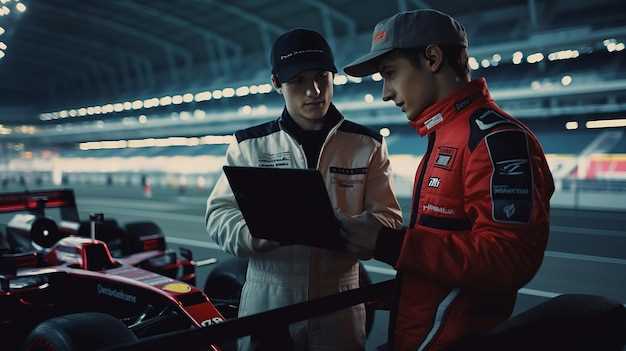
The world of endurance racing is captivating, featuring two prominent series: the IMSA (International Motor Sports Association) and the WEC (FIA World Endurance Championship). Each series has its unique characteristics, regulations, and philosophies, influencing how teams and manufacturers approach their participation. Understanding these differences is crucial for fans, competitors, and stakeholders in the motorsport industry.
IMSA focuses primarily on American endurance racing, with its flagship event being the prestigious 24 Hours of Daytona. The series is known for its close competition and diverse classes of vehicles, allowing for a mix of prototype and GT cars. On the other hand, WEC offers a global stage, featuring iconic races like the 24 Hours of Le Mans. Its regulations are designed to promote international collaboration and technical innovation among various manufacturers, pushing the limits of automotive engineering.
The rules governing these two series can vary significantly. For instance, IMSA has a unique points system that rewards consistency and performance within the confines of its own races, while WEC’s scoring system is tailored for a broader array of events across different countries. Additionally, the technical regulations differ, especially in terms of hybrid technology integration and vehicle performance balancing, making each series a distinct challenge for competitors.
Key Technical Regulations Differences Between IMSA and WEC

The International Motor Sports Association (IMSA) and the World Endurance Championship (WEC) operate under distinct technical regulations that shape their racing formats and vehicle performance. One of the primary differences lies in the vehicle classifications. IMSA utilizes classes such as Daytona Prototype international (DPi) and LMP2, while WEC prominently features LMP1, LMP2, and GTE categories. This classification impacts aerodynamics, engine specifications, and overall vehicle design.
Another significant difference is found in the balance of performance (BoP) regulations. IMSA tends to employ a more race-specific BoP policy, which can change from event to event based on track conditions and competitive dynamics. In contrast, WEC’s BoP is generally more stable throughout the season, aiming to maintain competitiveness across different manufacturers and engine configurations over a series of races.
Fuel regulations also differ between the two series. IMSA often uses a fixed fuel flow limit allowing teams to optimize their fuel strategies accordingly, while WEC emphasizes a maximum fuel capacity and standardized fuel usage per lap, influencing race strategy and pit stop frequency.
Tire regulations present another area of divergence. IMSA typically allows teams to use multiple tire compounds within a single race, granting flexibility based on race strategy. On the other hand, WEC mandates specific tire allocations per race weekend, which can limit teams’ strategic options and affect performance based on tire wear rates.
Finally, the technical scrutiny and safety standards vary with IMSA adopting a more recent approach to technology integration while focusing on American racing traditions. WEC, being an international series, often implements stricter regulations regarding safety equipment, including mandatory hybrid systems for top-tier classes that emphasize energy recovery and environmental considerations.
Understanding Pit Stop Procedures in IMSA vs. WEC
The pit stop procedures in the IMSA (International Motor Sports Association) and WEC (World Endurance Championship) showcase significant differences that highlight the unique philosophies of each racing series. Both organizations prioritize efficiency and strategy but approach pit stops in different manners.
In IMSA, a typical pit stop involves a wide range of activities, including tire changes, refueling, and driver changes. Teams need to balance speed and safety, adhering to specific regulations that govern the amount of time allowed for refueling. Notably, IMSA mandates that all refueling must occur with the engine off, which can extend the duration of a stop. This requirement influences strategies, as teams must plan for fuel management throughout the race to minimize the number of stops needed.
Conversely, WEC operates under a different set of regulations designed to enhance safety and efficiency. In WEC races, refueling can occur with the engine running, allowing for faster turnaround times. This difference often leads to shorter pit stops, as teams can execute simultaneous tire changes and refueling without the need to shut down the car. The WEC also uses the technologically advanced “Pit Stop Efficiency” rules, which encourage teams to minimize their time on pit road while adhering to strict safety protocols.
Another critical aspect is the duration of the pit stop itself. While IMSA often experiences longer stops due to mandatory components and safety checks, WEC teams are known for their meticulously orchestrated pit stop practices, with some teams achieving sub-minute stops through rigorous training and pre-race simulations.
In both series, the importance of effective communication and orchestrated teamwork during pit stops cannot be overstated. Engineers, mechanics, and drivers must work in perfect harmony to ensure swift execution. However, the implications of each series’ rules can lead to varying strategies. In IMSA, for example, a team may choose to prioritize fuel conservation to limit stops, while in WEC, teams might optimize their pit strategies around shorter stops to gain track position.
Ultimately, understanding the nuances of pit stop procedures in IMSA compared to WEC reveals how rules influence race strategy and performance. Teams that effectively adapt to these regulations while refining their pit stop practices often find themselves at a competitive advantage, regardless of the series they participate in.
Driver Eligibility and Points System in IMSA and WEC

In IMSA, driver eligibility is defined by specific criteria that ensure a level playing field. Drivers are required to have a minimum amount of racing experience, which is often assessed through previous participation in recognized racing series. Additionally, IMSA categorizes drivers into various classifications based on skill levels, allowing for more equitable competition among drivers of varying experience.
In contrast, the FIA World Endurance Championship (WEC) has its own stringent eligibility requirements, focusing on both experience and age. Drivers must hold a valid competition license recognized by the FIA and are often required to participate in qualifying events to demonstrate their capabilities. WEC also emphasizes the notion of “pro” and “am” drivers, giving amateur drivers the opportunity to compete alongside professionals within the same team.
When it comes to the points system, IMSA utilizes a unique approach that rewards not only race finishes but also a range of performance metrics throughout a season. Points are awarded based on the finishing position in each race, with additional points allocated for pole positions and leading laps. This system encourages competitiveness and rewards consistency across the season.
Conversely, WEC employs a different points scheme tailored to endurance racing. Points are distributed per race, with higher allocations for finishing in the top positions. WEC also implements a “bonus points” system for various accomplishments, such as achieving a certain lap time under race conditions or finishing the race without a penalty. This incentivizes teams and drivers to not only race fast but also to maintain reliability and discipline throughout each event.
Ultimately, both IMSA and WEC aim to foster competitive environments while ensuring that all participants meet established standards. The diverging approaches to driver eligibility and points allocation highlight the distinct philosophies of these prestigious racing series, catering to their respective audiences and objectives.



